The region of Cappadocia, in Turkey’s Central Anatolia region, is renowned for its otherworldly beauty. This dramatic landscape consists of high plateaus, lunar-like boulders and the rocky pillars known as ‘fairy chimneys’. The rocky topography changes colour from red to purple when the sun sets, and gleams softly under the full moon.
There’s plenty to explore here for adventure lovers. You could hike through Sword Valley, following the paths that meander between its sharply pointed fairy chimneys. Another spectacular hiking trail takes you through nearby Rose Valley, where the undulating rock formations are striated in different shades of pink. Cross the rifts and folds of this surreal landscape on a mountain bike, or head off on a multi-day horseback ride passing through the region's traditional troglodyte villages. It's the ideal place to try paragliding; drifting on thermals over the region's spires and valleys in the fading light.

While exploring Cappadocia, you’ll see that many of the fairy chimneys have small entrances and openings in them. Explore more closely and you’ll discover the landscape is honeycombed with rooms, which have been painstakingly hollowed into the soft rock. But who first lived here, and how long ago? How were these mysterious rock formations created in the first place? Here's what we found out.
Tuff Stuff
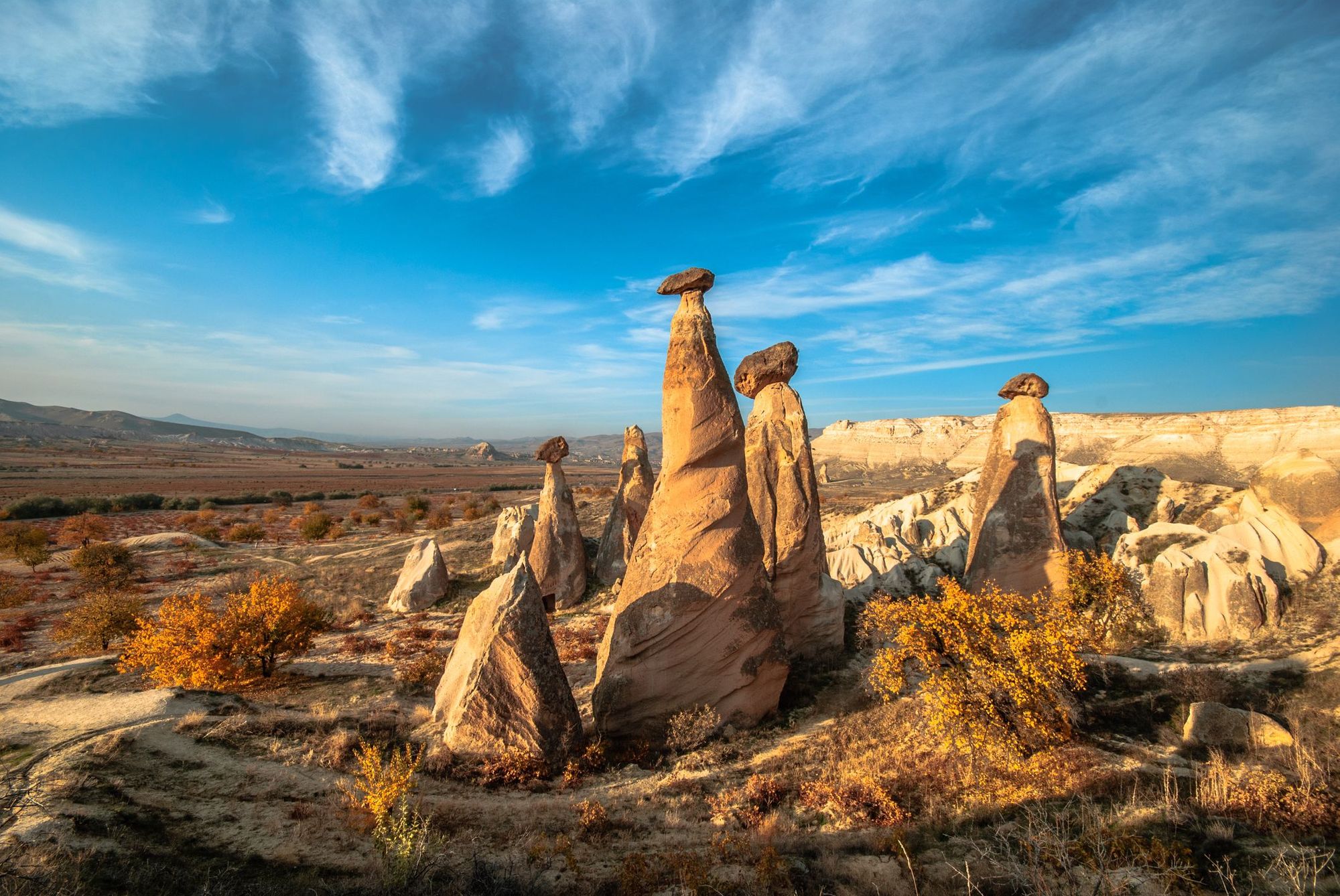
Millions of years ago, volcanic eruptions rained ash across the Central Anatolia region. This volcanic ash hardened into tuff, which is a soft, porous rock. This was eventually covered by a layer of harder basalt. Millennia passed, and the slow process of erosion began. Wind and water slowly wore away the softer tuff to form pillars of rock. The basalt on top eroded more slowly, and formed a mushroom-shaped cap over each pillar, protecting it from further erosion. The geological name for this rock formation is hoodoo, but they’re more often known as fairy chimneys, tent rocks or earth pyramids.
Cappadocia lay on the historic Silk Route (a network of ancient trading routes running from China to Turkey) and so various civilisations have laid claim to the territory. It was an Indo-European race known as the Hittites who first settled the area, in around 1800 BC. They soon realised that the soft tuff could be excavated and carved into rooms. In fact, they created entire underground cities.
One of the most famous is Derinkuyu - formerly known as Elengbu - a labyrinthine underground complex encompassing 18 levels of tunnels, burrowing down to 85 metres below the ground. But this wasn’t just the work of the Hittites. It’s thought that they excavated just the first few floors, and used the caves as spaces to hide from the Phrygians. To no avail - the Phrygians took over the cities and are likely responsible for the large scale excavations the area is known for, which were developed by subsequent civilisations.
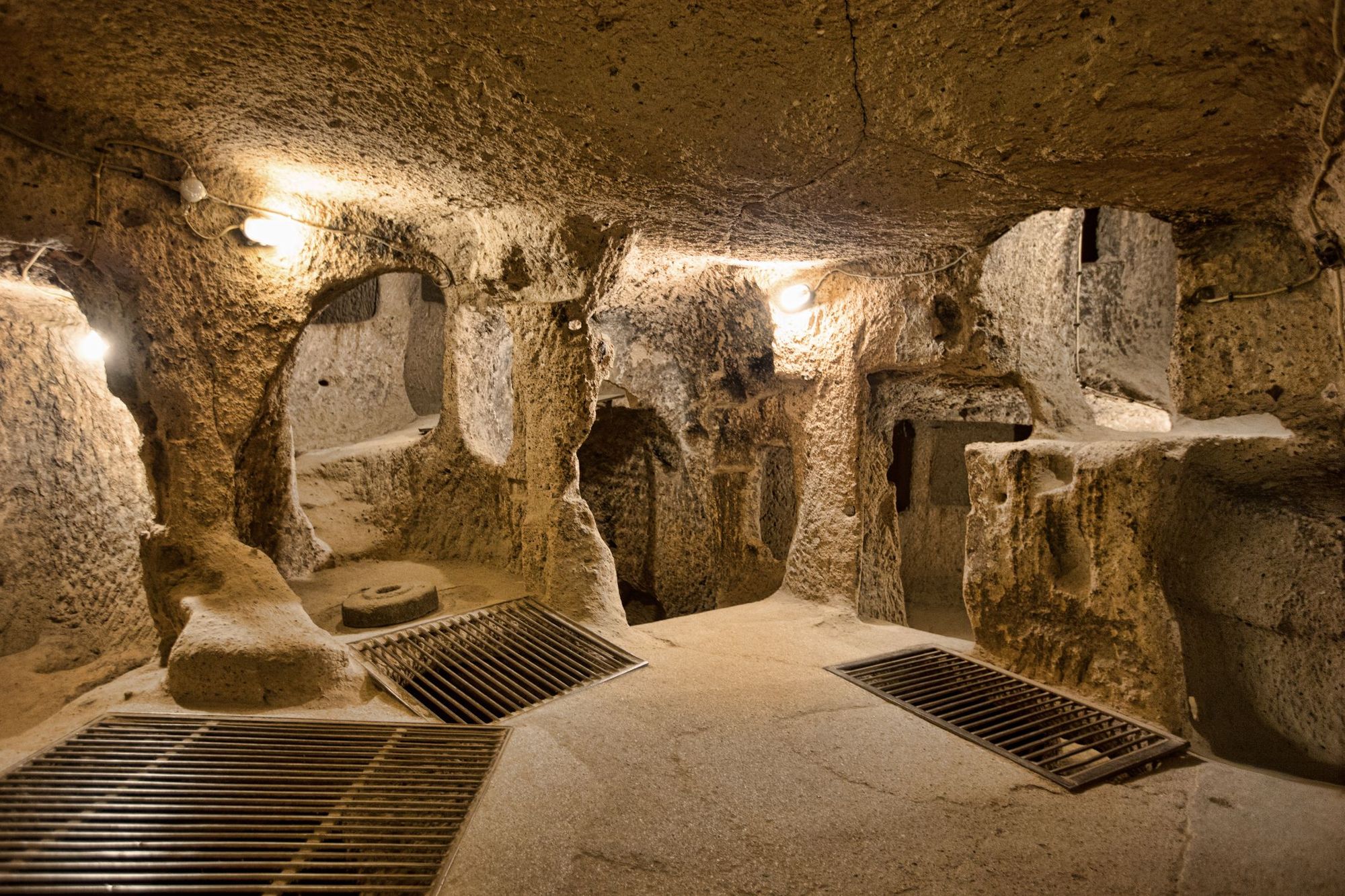
The underground civilisations of Cappadocia were used to their fullest extent during the Byzantine period (which began in 330 AD). At this point in time, the expanding Roman Empire hunted and cruelly persecuted the new Christian religion. By the seventh century, Islamic civilisations were also conducting raids on the Byzantine Christians.
During its peak, it's thought that around 20,000 residents were able to shelter underground in Derinkuyu. The top floor was used to house animals and store grain - the smell and gases produced to the livestock were close to the surface. The floor below held living quarters, from bedrooms to kitchens, and even a winery. Travelling even further below the ground, you would have discovered food supply warehouses, water wells and burial chambers. Rooms were connected by a maze of narrow passageways, created to deter invaders - large boulders were used to block doorways in times of invasion.
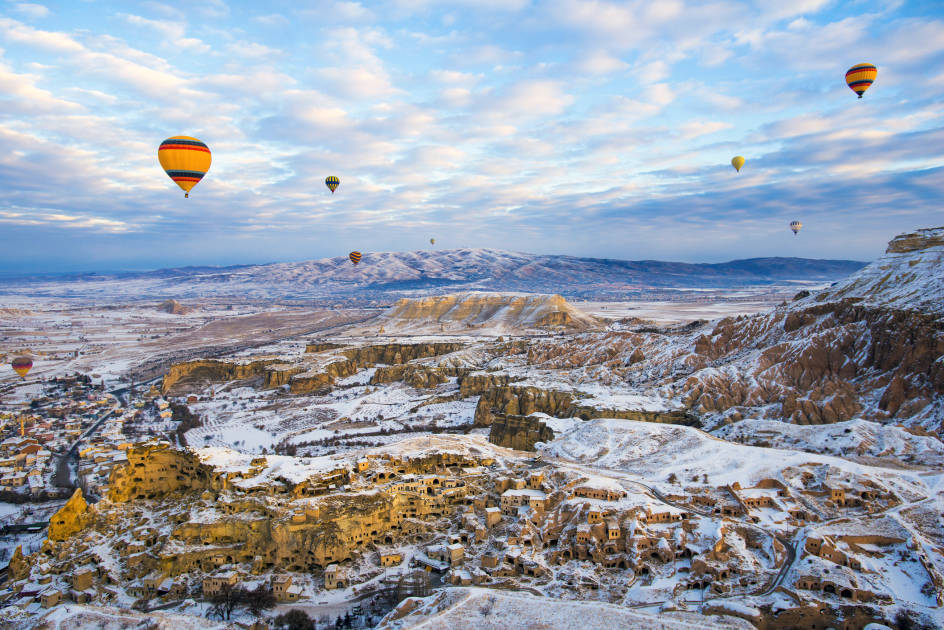
In times of peace, however, people dwelled above ground. They carved out homes for themselves in the ‘fairy chimneys’ of Cappadocia. You can still see the soot-blackened walls of former kitchens, and Byzantine churches hewn into the rock. Dark Church has the best-preserved frescos. Some of the region’s more interesting inhabitants were Stylite ascetics - 6th century monks who lived on top of pillars. Normally, they built themselves rocky towers with a room or perch on top, but in Cappadocia, the pillars already existed.
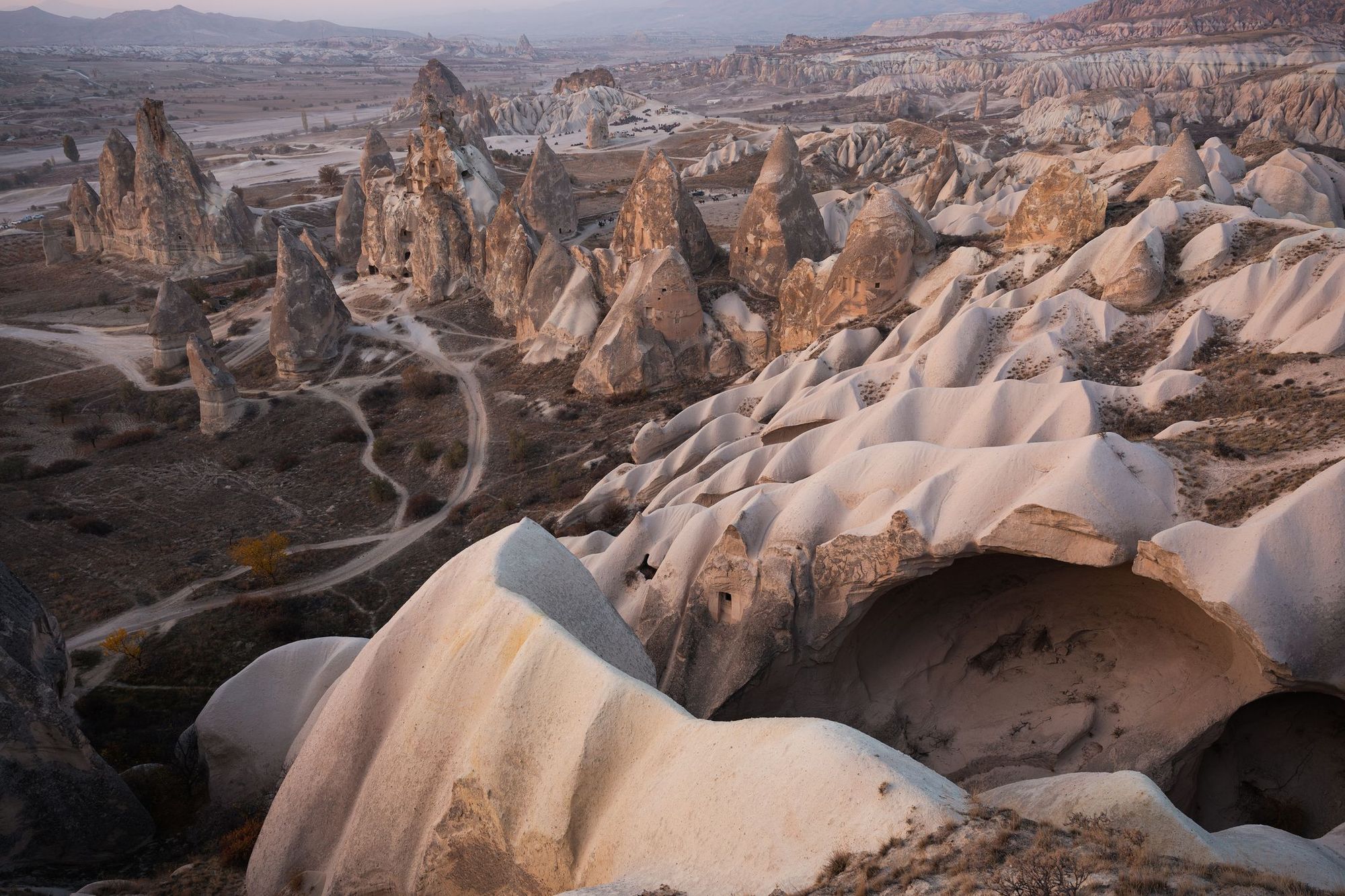
Examples of these stylite hermitages include St Niketas Church and the Rose Valley monastic area. And it wasn’t just Christians who lived in the area - with the arrival of Islam to Anatolia in the 14th century, it also became home to illustrious Muslim scholars and philosophers.
A Rediscovery
The underground cities of Cappadocia were used intermittently up until the 20th century, when Cappadocian Greeks used them to escape persecution. But when the last residents were expelled from them in 1923, the subterranean cities were closed up and forgotten. The church frescoes were vandalised. Many people moved out of the troglodyte caves and into more modern settlements built out of, rather than into, the rock.
In 1963, a man from Nevsehir province near the Turkish city of Cappadocia was renovating his basement. Imagine his surprise when he knocked down a wall and discovered a secret room behind it. While exploring, he realised that there was a tunnel leading out of the room, and descending into a dark labyrinth. He’d found a way into the city of Derinkuyu.
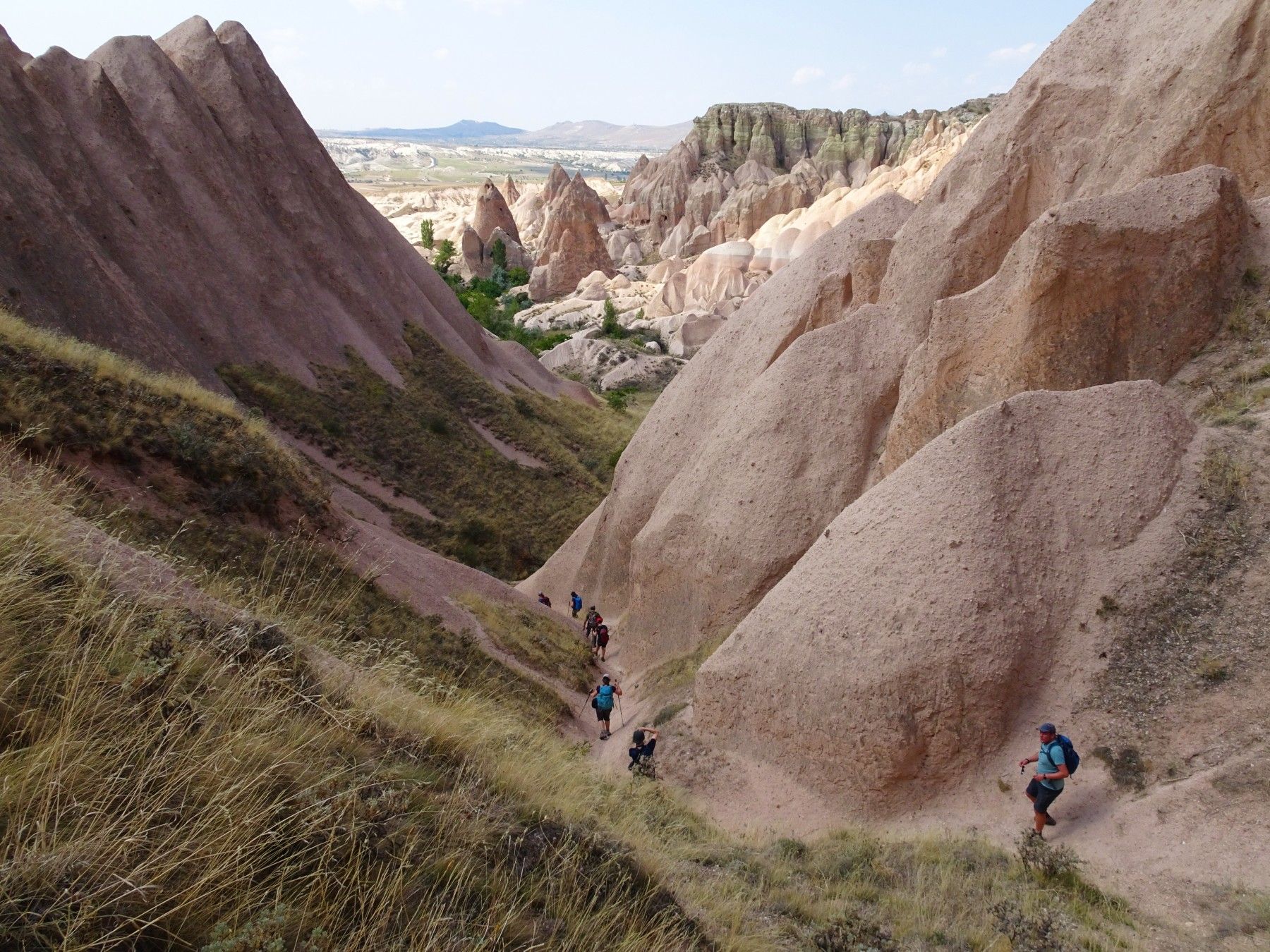
It was in the sixties that tourists became interested in the region, drawn in by the landscape and the culturally fascinating troglodyte settlements. In 1985, Göreme National Park and the Rock Sites of Cappadocia gained a UNESCO designation, which helped preserve and rehabilitate the area. Many of the fairy chimneys and cave complexes have now been converted into boutique hotels, where it’s possible to have a comfortable stay in a unique location. The area is also renowned spot for hot air ballooning.
Despite its popularity, it’s easy to get off the beaten track on a walk or cycle ride. Combine nature and culture on a spectacular day hike through Meskendir Valley and Red Valley, on a well-marked trail that takes you through underground tunnels and past abandoned cave houses. Take the upper route along the ridge of the valley for spectacular views of surrounding tuff formations. You can even incorporate a trip to Göreme open-air museum into the hike, to discover the churches and cities hewn into the rock.

Even today, lost subterranean metropolises are still being discovered. In 2019, a 5,000-year-old underground city was discovered under the Çalış township of Avanos, in the heart of Cappadocia. Around 15 houses in the district had called to say their houses were mysteriously filling up with water. While searching for the cause, municipality crews discovered the submerged underground city, which stretches to almost 1.2 million square metres. This shows that the Cappadocia region has yet to reveal all its secrets.
Feeling inspired? Check out our adventures Trekking Turkey's High Taurus and Cappadocia or Hiking the Fairy Chimneys of Cappadocia in Winter.



